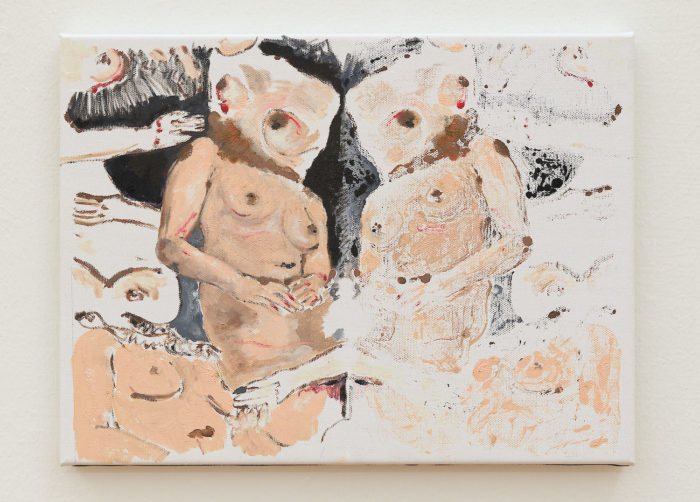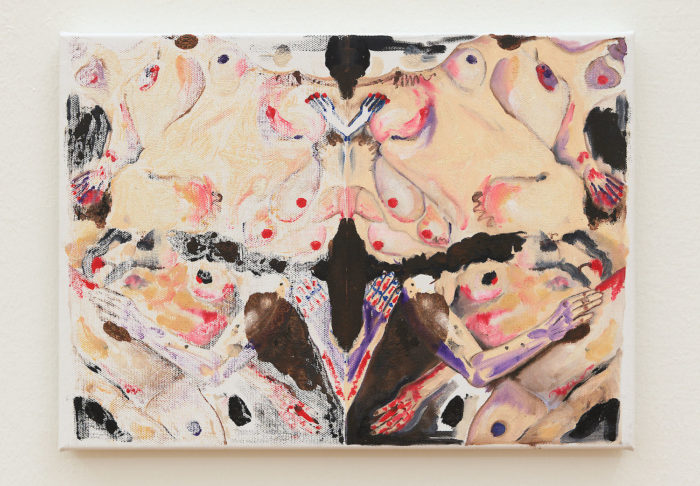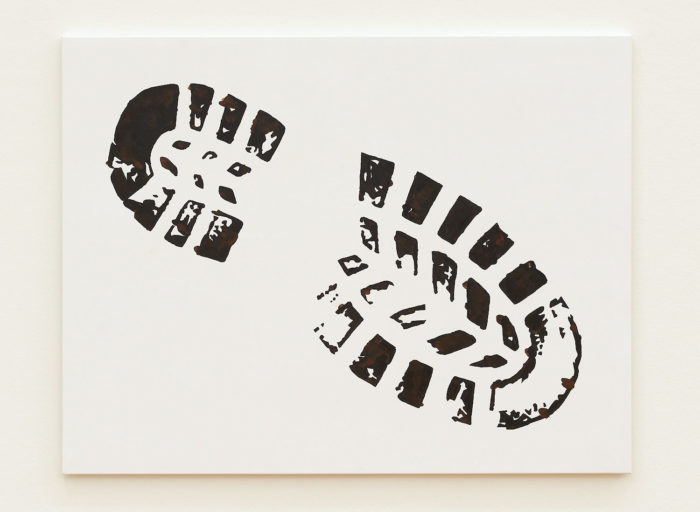The advent of a social media-dominated world has led to the emergence of a new type of professional: the influencer. Online, thousands of people make money by giving insight into their perfectly manicured (not so) private lives. While this type of content often seems shallow, one tends to forget that behind inspirational gym photos and pictures of smoothie bowls, lies work – like in any other profession. This, however, should never be obvious; self-representation is mostly credible thanks to the aura of leisure and effortlessness emanating from it. Recreation simply comes off as much sexier than labor.

Booby, Marlie Mul’s current solo show at Vienna’s Croy Nielsen running to December 16, takes place IRL. However, it addresses some of the issues arising from the neoliberal craze for marketable navel-gazing so present online.
Two groups of paintings adorn the gallery’s walls. The first is composed of small canvases, painted in fleshy hues. All of them are based on female nudes and range from realistic self-portraits to almost-abstract agglutinations of body parts. Only half the canvas is actually painted; before stretching them on a stretcher bar, Mul folded the canvases in two, filling the blank space with a mirrored imprint, a blemished copy of her original work. Immediately, a Rorschach test’s individualizing properties come to mind; then this strategy to fill the pictorial void starts to feel almost comically simple, and one cannot help but be irritated by what reads as an easy way out.

But isn’t this exactly the artist’s point? Increasingly we’re pushed to be optimized, ever-present and hyper-efficient renderings of ourselves; Mul’s folding technique, combined with the female nude as the painting’s central motive, offers viewers hungry to witness artistic self-introspection a popular and quick solution. The paintings possess a decorative quality, perhaps an additional trick in their strategy to please. Yet, Mul manages to subtly pivot away from one-dimensional irony: shrill touches of red and purple and an increasing reduction of her own body to a pair of breasts annihilate the possibility of these works being sarcastic one-liners only. Instead, you sense the same urgency you’d feel when wanting to post a picture on Instagram with only very little battery on your phone: grotesque, exasperating, but terribly real.

In the second series of works, all canvases depict a brownish footprint on white background. The works are larger and look almost industrially made; the contrast to their smaller, delicately individual counterparts strikes you hard. Here too, the idea of a hasted endeavour transpires, but these prints – again, Mul uses a duplicating technique – bypass the anxiety-inducing desperation to please inherent to the artist’s nudes. Instead, the focus appears to shift to one of basic capitalism most sordid truths: time is money. You want a painting? OK. No time for prettiness, technical refinery or complex composition: a canvas, one color, an efficient motif, here you go.
Booby not only confronts viewers with a frustration stemming from bourgeois preconceptions of painting; it also forces them to consider art production not as some idealized hobby, but as a process of labor subject to the same pressures as others – whether it’s putting together an excel presentation, fixing a car or producing a makeup tutorial for your youtube channel.**













